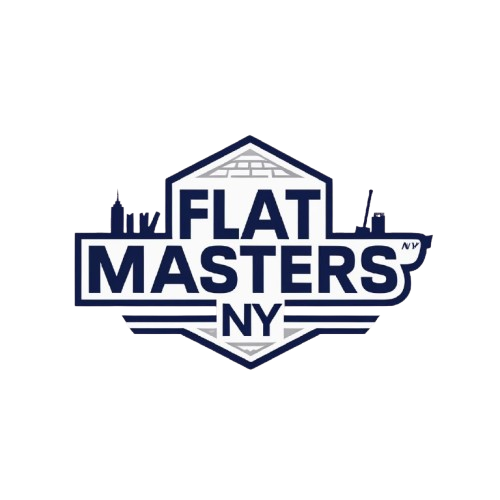Professional Flat Roof Waterproofing Techniques & Solutions
After working on over 2,500 flat roofs throughout Queens over the past eighteen years, I can tell you that proper waterproofing isn't just about slapping on some coating and calling it a day. The flat roof waterproofing techniques we use at Flat Masters NY have evolved dramatically since I started in this business, and honestly, some of the old methods we used back then make me cringe now.
The thing about flat roofs in Queens is they're constantly battling our weather extremes - from those brutal summer heat waves that can push surface temperatures past 160°F to winter freeze-thaw cycles that'll crack even the best membrane if it's not installed right.
Modern Waterproofing Membrane Systems
Let's start with what actually works. EPDM rubber membranes remain one of our go-to professional waterproofing methods, especially for residential buildings in Astoria and Long Island City. This stuff is incredibly durable - we've got EPDM roofs we installed fifteen years ago that still look fantastic. The key is in the seam welding. You can't just overlap these sheets and hope for the best.
TPO membranes are gaining serious ground, particularly on commercial buildings. The heat-welded seams create a completely watertight barrier when done correctly. But here's where a lot of contractors mess up - they rush the welding process. Each seam needs to be tested with a probe tool to ensure proper adhesion. We always do a full seam inspection before we consider any TPO job complete.
Modified bitumen systems still have their place, especially when you're dealing with older buildings that need a waterproofing solution that can handle some structural movement. The torch-applied method requires real skill - too much heat and you'll damage the membrane, too little and you won't get proper adhesion.
Liquid Applied Waterproofing Solutions
Liquid waterproofing has revolutionized how we handle complex roof details and penetrations. Polyurethane coatings create a seamless membrane that's particularly effective around HVAC units, skylights, and drainage areas where traditional sheet membranes can be challenging to install properly.
Silicone roof coatings work exceptionally well for restoration projects. Last month we restored a 12,000 square foot warehouse roof in Maspeth using a silicone system - the building owner was facing a complete tear-off that would have cost him $85,000, but we achieved full waterproofing for under $35,000 with a twenty-year warranty.
The application technique for liquid systems is critical. Temperature, humidity, and wind conditions all affect the curing process. We never apply liquid membranes when temperatures are below 45°F or above 85°F, and definitely not when rain is forecast within 24 hours.
Critical Waterproofing Details
Here's something most property owners don't understand - the membrane itself is only part of the waterproofing system. The real magic happens in the details. Parapet walls, for instance, need proper flashing that extends at least eight inches up the wall and is mechanically fastened, not just adhered.
Drainage is absolutely crucial. Every flat roof needs a minimum slope of 1/4 inch per foot toward the drains. We see so many roofs where contractors installed perfect membranes on dead-flat surfaces, then wonder why they're getting ponding water and premature failure. Physics doesn't care how expensive your membrane was.
Penetration sealing requires specific techniques for each type. Pipe boots need to be sized correctly and sealed with compatible materials. HVAC curbs must be properly flashed with cant strips to prevent water infiltration. We use a two-part approach - mechanical attachment plus chemical bonding for critical penetrations.
Quality Control and Testing Methods
Professional waterproofing isn't complete without proper testing. We perform flood testing on all critical areas, maintaining 2 inches of water for a minimum of 24 hours. Any roof that can't pass a flood test isn't ready for final approval.
Electronic leak detection has become invaluable, especially on larger commercial projects. We use low-voltage wet testing to identify even pinhole leaks in membrane systems. It's amazing what this technology can find - defects that would take years to show up as visible leaks.
Infrared thermography helps us identify moisture infiltration in existing roof systems before applying new waterproofing. There's no point in waterproofing over wet insulation - it'll just create bigger problems down the road.
Common Waterproofing Failures
I've seen every type of waterproofing failure you can imagine. Probably 60% of the repair calls we get are from poor installation techniques rather than material failures. Contractors who don't properly clean the substrate before membrane installation, or who try to save money by skipping primer applications.
Seam failures are particularly common with DIY attempts and low-bid contractors. Every seam in a membrane system is a potential leak point. We overlap all seams by a minimum of 3 inches and use proper adhesives for the specific membrane type.
The other major issue is incompatible materials. Mixing different membrane types or using wrong adhesives creates chemical reactions that break down the waterproofing system. We always verify material compatibility before starting any project.
Maintenance and Long-term Performance
Even the best flat roof waterproofing techniques require ongoing maintenance. We recommend bi-annual inspections, particularly after severe weather events. Small issues caught early prevent major waterproofing system failures.
Drainage system maintenance is critical but often overlooked. Clogged drains create ponding water that dramatically reduces membrane life. We include drain cleaning in our maintenance agreements because it's that important to long-term waterproofing performance.
Surface cleaning extends membrane life significantly. Organic growth, accumulated debris, and chemical deposits all degrade waterproofing materials over time. A proper cleaning schedule can double the effective life of most membrane systems.
At Flat Masters NY, we've developed our waterproofing techniques through years of real-world experience on Queens rooftops. Every project teaches us something new about what works in our specific climate and building conditions. If you're dealing with flat roof waterproofing challenges, give us a call at (917) 994-7618. We'll evaluate your situation and recommend the most appropriate professional waterproofing methods for your specific needs and budget.

